“No one listens to us. We are refugees. What can we do?” Said the old lady.
She was a pleasant person, but the sense of non-belonging was far too apparent.
This was a little shop next to the Bhagsu Nag Road.
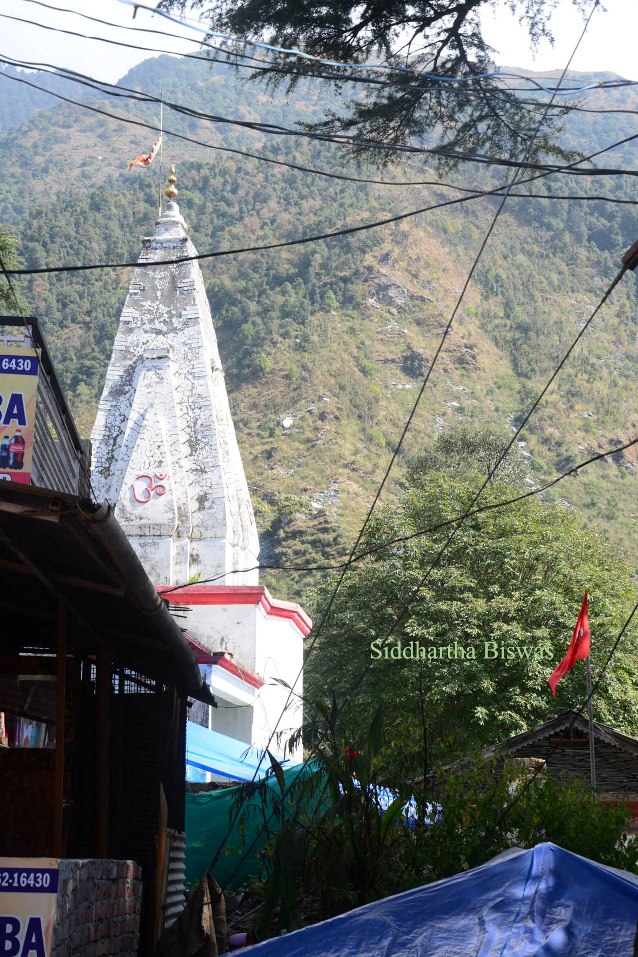
(The Bhagsu Nag temple)
Like the other shopkeepers in the Tibetan market in McLeodganj she was not at all intrusive. (The footpath stalls, mostly non-locals, were quite the opposite.) We were in her shop just browsing through different kinds of shawls and stoles and caps and such stuff, she never bothered us or suggested anything. She merely answered our queries. We are bad shoppers – bad because we can never haggle. When someone quotes a price, we timidly try to reduce it by 20 percent or so. The talented shopper starts by offering 20 percent and gets the object finally at 50 percent. Not us. The shrewd gaze of the merchant quickly realises that we are easy prey. That is why we look for reliable (looking) people. And it has been our good fortune that we have often found people who have honoured that trust. This lady seemed reliable and we were not mistaken. She was composed and dignified. It was only when I asked whether she was from around she opened up. Even though she was an exile in a not really welcoming land, her main complaint was not the past, but the present. Quite like us she was sick and tired of the torrent of troublesome tourists.
McLeodganj used to be calm and quiet, Dharamshala was always the comparatively busier town.
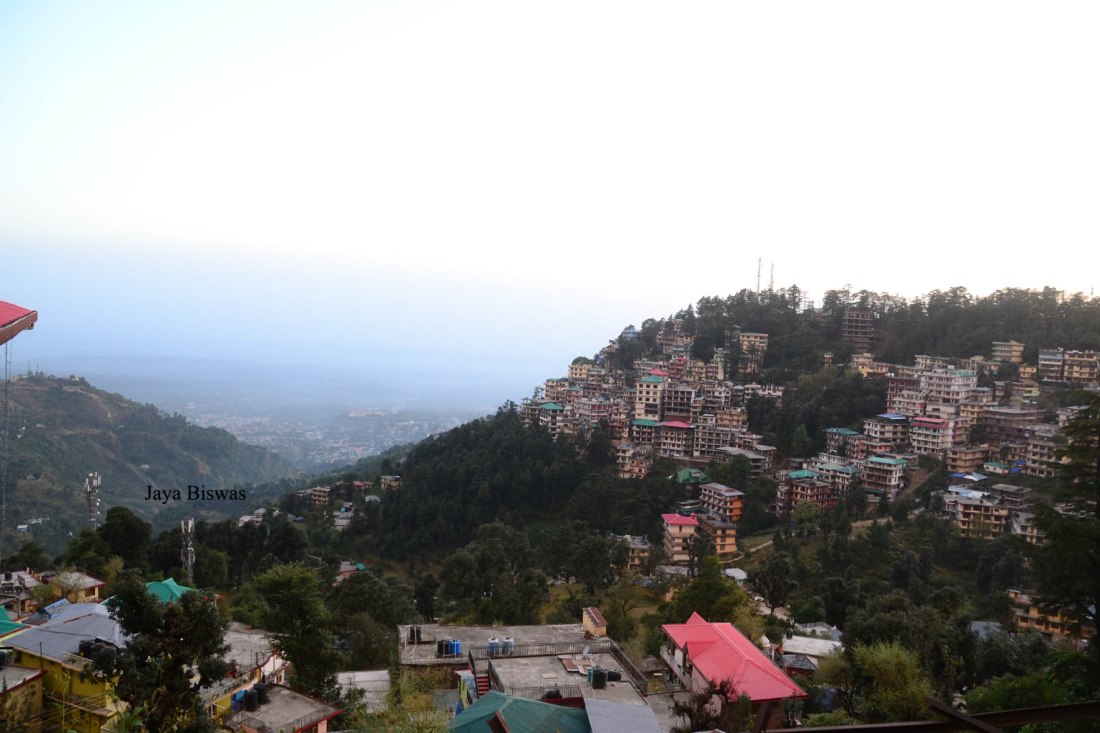
But with “holidayers” increasing every year, McLeodganj is drastically changing. The area around Bhagsu waterfall and Nag Mandir used to be harvest areas, but every buildable square inch now has a hotel.
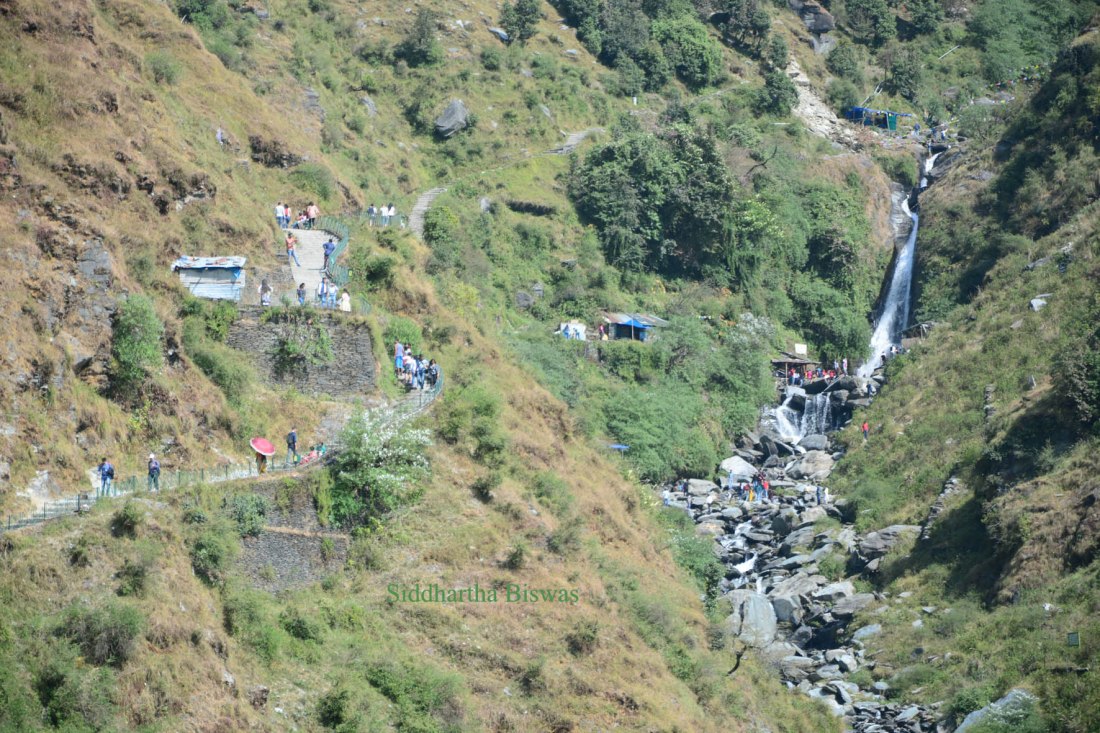
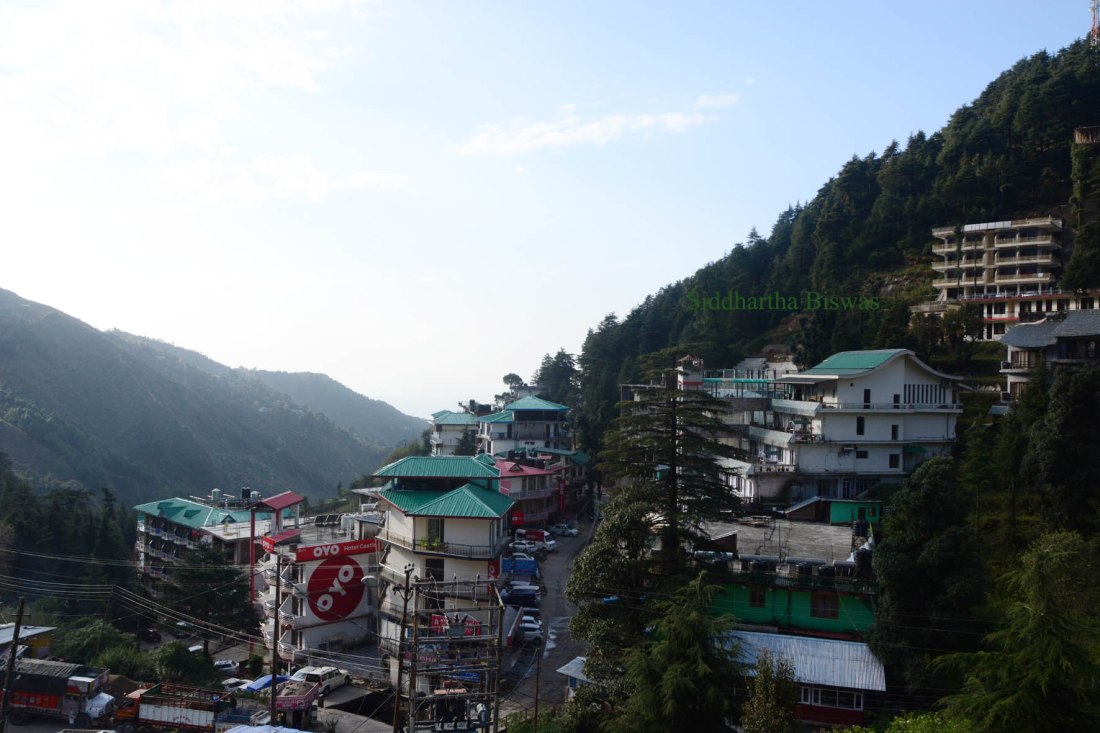
And to top it, people flowing in from another neighbouring country, life has become harder for the Tibetan population. She said that the refugees live a life of quietness, but to the uninitiated eye the Tibetans and the other Mongoloids might look the same. And these others now pretend to be refugees and take advantage of the tourists; thereby giving the Tibetans a bad name. Of course, it is a great simplification. There are always bad pennies everywhere. But this lady was simplicity personified, and her words we believed with simple faith. It is a fact that in recent times with a great influx of people from the plains and the neighbouring valleys crime has increased. Drugs are too common. Safety is an issue. People looking for a good time ask for a great deal. Demand and supply is an equation you cannot argue with.
And basic ideas and laws regarding natural preservation are flouted on a regular basis. Both McLeodganj and Bhagsu are small areas; they literally overflow with people most of the year. And to cater to this overflow there is now a regular progrom that systematically attacks our arboreal allies and mutilates the mountains.

This lady carried all the sadness and resignation so common in refugees. The exiled Tibetan government has its headquarters in McLeodganj, and that is the reason this place is called Little Lhasa. Tibet is suffering and the world mostly doesn’t care. But, that is the way of the world. Bullies win. The history of Tibet’s annexation is there in the Tibetan museum within the Dalai Lama monastery. It is small, disappointing to many. But is a powerful document of the oppression these people face.
But this lady also carried a requiem for a time long past, a time that had hope, a time that did not have all this ugliness and squalor.

Most people go to McLeodganj to visit the Dalai Lama Monastery. The Monastery itself is not aesthetically pleasant. It does not need to be. It is for the spiritually inclined. And a very large number of devotees pray there. Their patience and concentration are exemplary as they are continuously disturbed by tourists (mobile phone or digital camera wielding) like us!
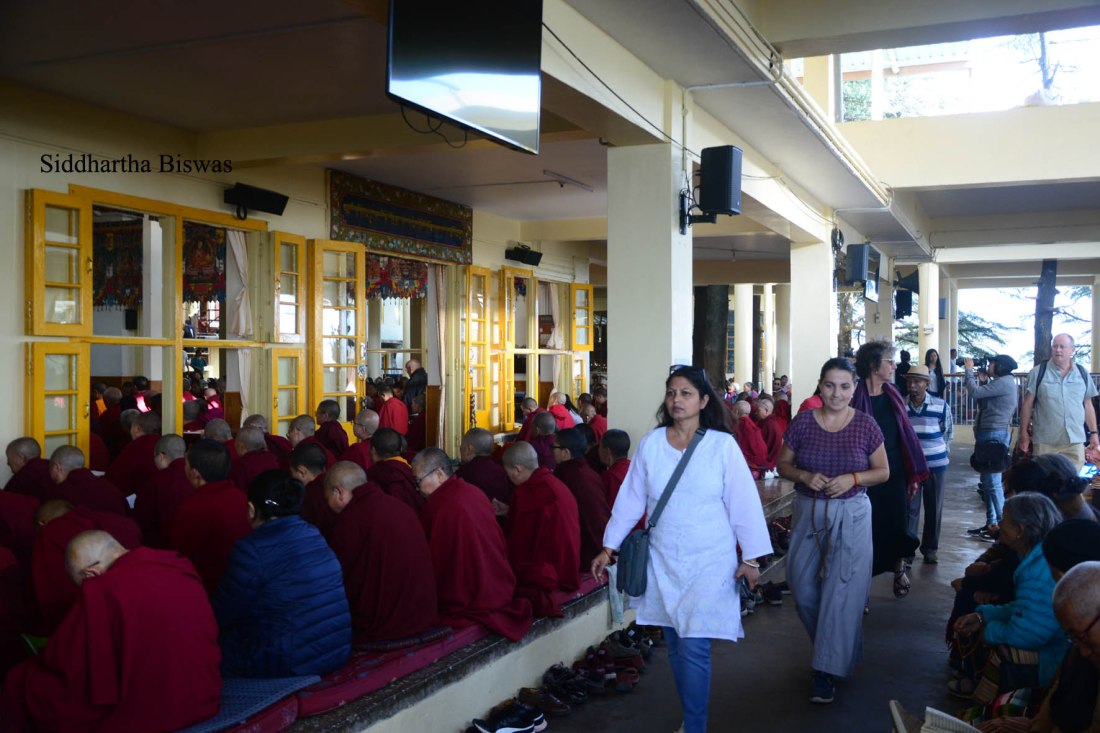
I have my doubts whether the Dalai Lama can really be found there – there is a token security check – but the place is far too public for such a giant political figure.
On a quirkier note, there were so many Lamas who looked like the great man it seemed that McLeodganj was holding a Dalai Lama lookalike contest.

Dharamshala and McLeodganj are picturesque. According to some, McLeodganj is called Upper Dharamshala. And that “some” included our tour manager, even though locals in McLeodganj and Bhagsu scoffed at the idea. Our tour operators (this time we did take help) had botched up the hotel booking and in order to hide their ineptitude they very rudely informed me that I was making a fuss over nothing. “I don’t understand what your problem is. McLeodganj is upper Dharamshala.” Said this Mr Lamba, our so-called tour manager. We were supposed to stay at Dharamshala, but when our car left the town and started climbing the hill, we were surprised. Already the agency had changed our plan once, without having the courtesy of informing us about it. We were supposed to stay at Mandi as a transit point, but they kept us at Bhuntar. When I asked this Lamba fellow about that, he told me not to worry. They will do what is best for us. Mandi was two hours further on the road. Bhuntar was dusty and a waste of time. So on our way to Dharamshala we had already lost two hours. But never complaint if you have booked your tour with the agency called Himachal Pradesh Helpline Tourism. They do not take complaints kindly. Before that moment they were all lovey-dovey, calling me frequently and accepting our satisfaction with grace. The moment we had a complaint they became haughty and rude and stopped calling completely. ‘Have it your own way, see if we care’ – was the new position. I, for one, will never go back to them.
The “sight-seeing” points near McLeodganj are nothing to write home (or a blog) about. If it was a quiet place allowing people to breathe, it would have been fantastic. But McLeodganj and Dharamshala during holidays or weekends are like Maithon on 26 January (some day I will tell you the tragic story of re-public day). This is where the whole of Delhi, Haryana, Punjab and northern UP converge on all possible occasions. All you see are smartly (or smartingly) dressed young people posing for selfies or groufies or engaging in some other such idiocy completely ignoring the hills. Butter chicken and butter nan are the two phrases you hear most (incidentally, I love both). There is a church (St John in the Wilderness – no wilderness anywhere around nowadays) which is like all the churches in the region.

There is a viewpoint which refused to offer us any view (but to be honest, on a clear day and if you are early Naddi would give you grand views).
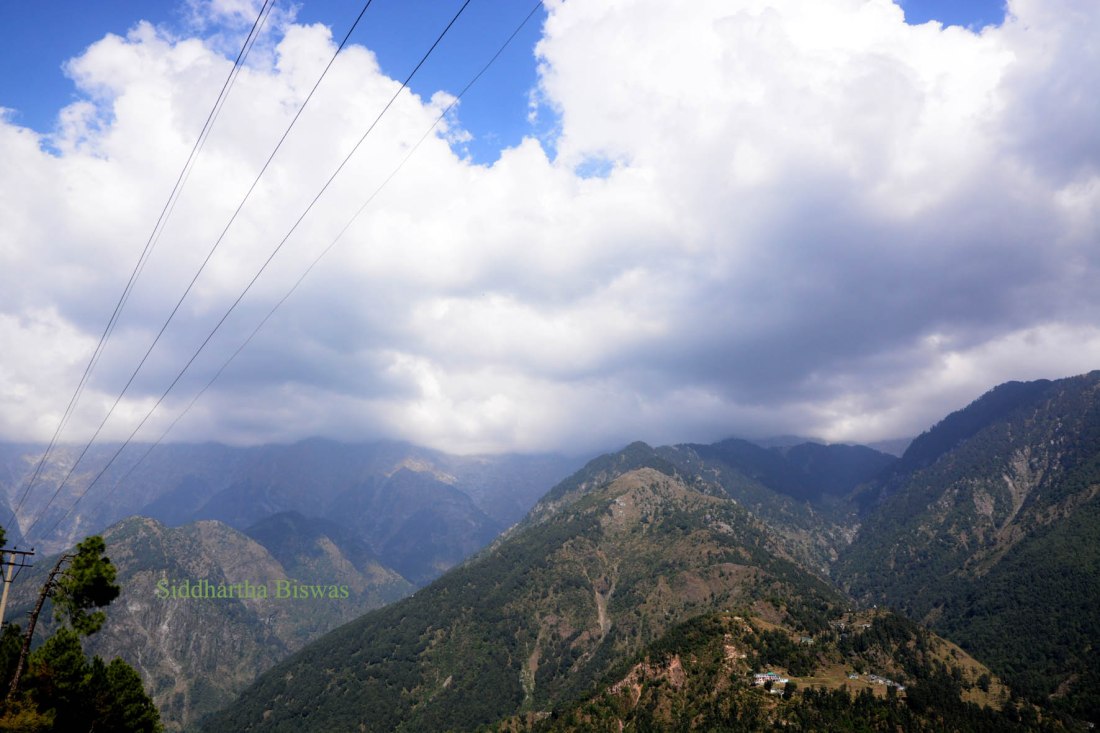
The Dal Lake is a sad parody of the one in Kashmir. There are a few interesting monasteries. But Goldie, our driver from the agency, started the day so late that we never had the time to visit the place we were truly interested in – the Tantric Gyuto Monastery. Goldie was a great driver. His only fault was he did not believe in starting the day before 10 in the morning. That day we started at 1 p.m., so you can imagine how irritated we were.

We lost precious daylight hours because of that. Not only that, the car that was provided (we had paid for a Tavera and was given an Ertiga) needed repairs three times (in a span of eight days). We had to wait once in a hotel, and twice in the car, on all occasions for hours that turned into ages.
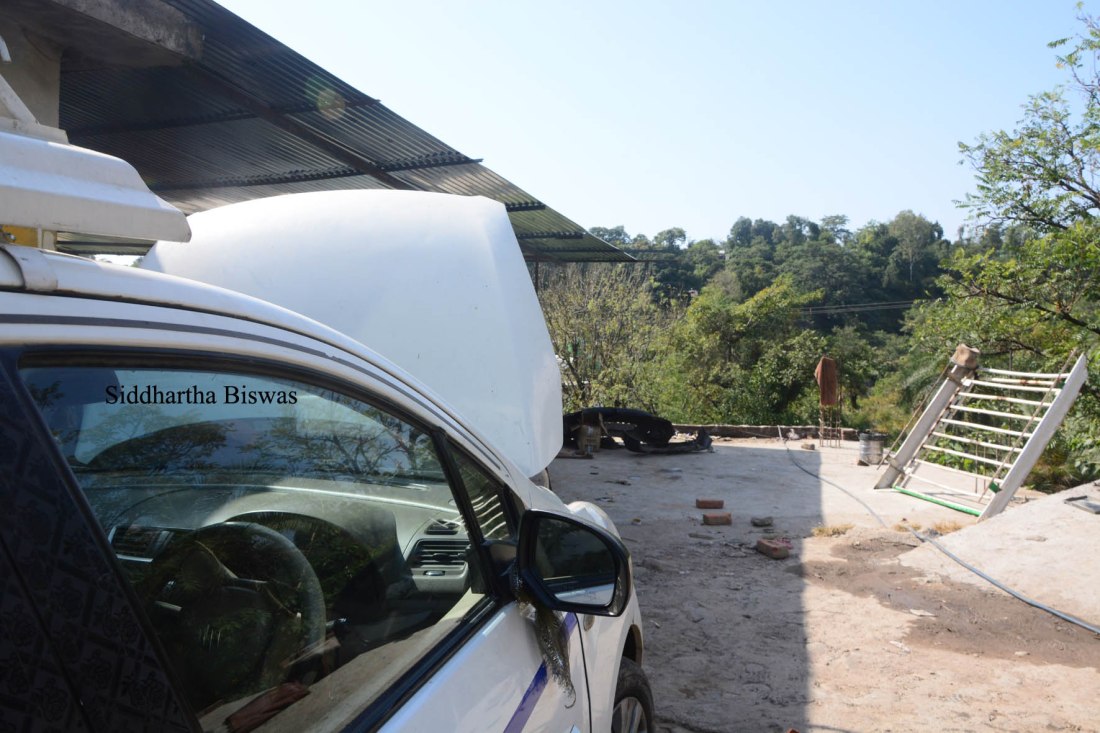
The only saving grace of that part of the trip was the food at German Bakery, Bhagsu. We are great fans of the German Bakery. But quite surprisingly the Bhagsu Cake was better in Manali.

(’tis the season of cakes, hence…)
Dharamshala and around were good places once for people like me. They are not anymore. One has to go up to Dharamkot, or go on the fashionable trek to Triund Lake to find even a modicum of peace. Dalhousie or Khajjiar, even with their crowds, are far better places.
This is the story of almost all hill stations these days. The more popular ones are in the worst states. Tourism or the so-called eco tourism has ruined nature altogether. It is only the small hilly villages with one or two homestays that still give you the feeling that you are somewhere in the hills.
LikeLike